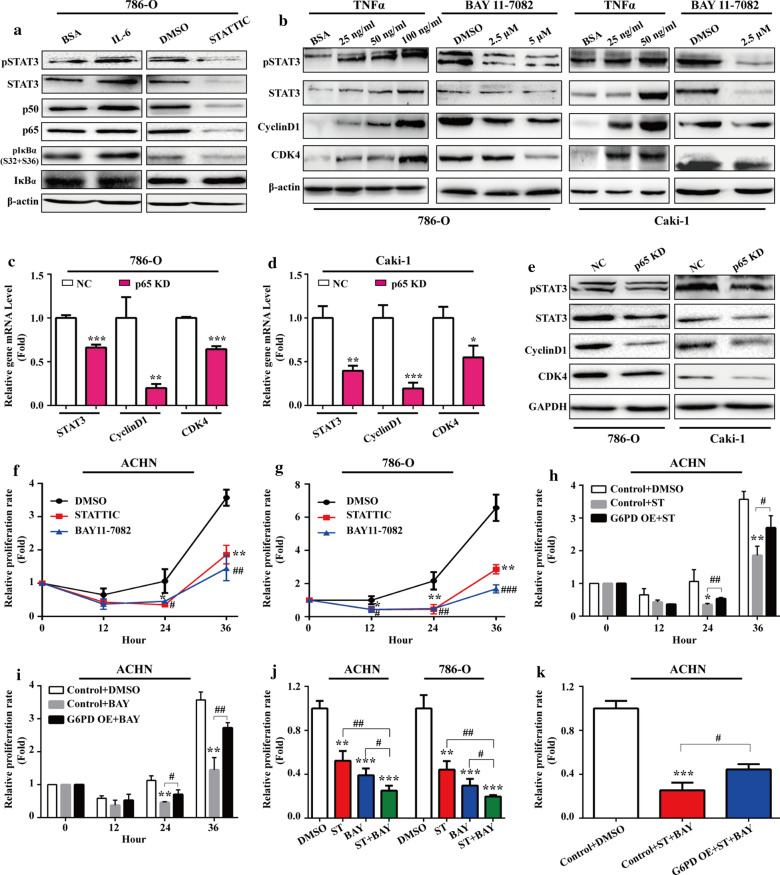Fig. 4.
NF-κB and STAT3 activated each other and facilitated ccRCC proliferation synergistically. a 786-O cells were treated with pSTAT3 stimulator IL-6 (4 ng/mL) or inhibitor STATTIC (6 μM) for 24 h. The changes in the expression of pSTAT3, STAT3, p50, p65, pIκBα, and IκBα at the protein level were detected using Western blot analysis. b 786-O or Caki-1 cells treated with TNFα (24 h) or BAY11-7082 (24 h) at indicated doses were subject to Western blot analysis to determine the protein expression changes of pSTAT3, STAT3, CyclinD1, and CDK4. 786-O or Caki-1 cells were infected with p65 RNAi lentivirus or negative control. The changes in the expression of STAT3, CyclinD1, and CDK4 at the mRNA level, and pSTAT3, STAT3, CyclinD1, and CDK4 expression at the protein level were determined by real-time RT-PCR c, d and Western blot (e) analysis, respectively. The relative proliferation rates of ACHN (f) or 786-O (g) cells following treatment with DMSO (control), STATTIC (pSTAT3 inhibitor, 6 μM), or BAY11-7082 (NF-κB inhibitor, 5 μM) were measured by MTS assay at indicated time course. (H-I) The control or G6PD-overexpressing ACHN cells were treated with STATTIC (6 μM) (h), or BAY11-7082 (5 μM) (i) for 0, 12, 24, and 36 h, and the relative proliferation rate was determined by MTS assay. j ACHN and 786-O cells were treated with STATTIC (6 μM) or BAY11-7082 (5 μM) independently or jointly for 36 h, and the relative proliferation rate was measured by MTS assay. k The control or G6PD-overexpressing ACHN cells were treated with DMSO or combination of STATTIC (6 μM) and BAY11-7802 (5 μM) for 36 h, and the relative proliferation rate was determined by MTS assay. β-Actin or GAPDH was used as a loading control. Data are expressed as mean ± SD from three independent experiments, each performed in triplicate. *P < 0.05, **P < 0.01, ***P < 0.001, #P < 0.05, ##P < 0.01, and ###P < 0.001 vs each control. NC, negative control; ST, STATTIC; BAY, BAY11-7082; G6PD OE, G6PD overexpression

